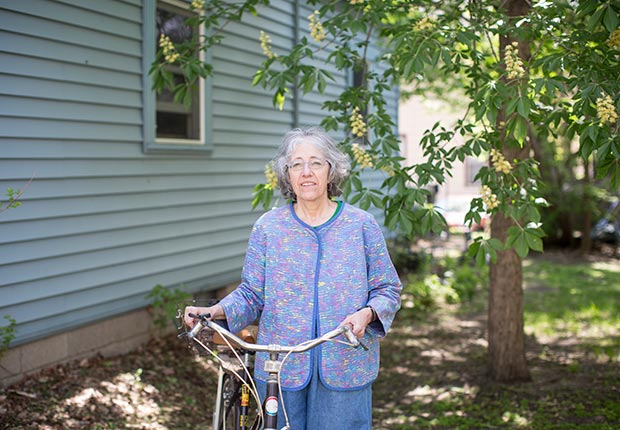AARP Hearing Center

By Pamela Schmid
When Sally Downing retired from her job as a medical assistant for health reasons at 57, she and her husband signed up for catastrophic health insurance, gritting their teeth when they paid the monthly $427 premium.
“It was annoying, paying for it every month and knowing we’d probably never use it,” said Downing, 64, of Minneapolis. Because the policy, which carried $17,000 deductibles for each of them, didn’t cover medications or preventive care, “we both didn’t go to the doctor very much.”
Early last year, Downing learned that she qualified for Medical Assistance—Minnesota’s version of Medicaid—thanks to expanded eligibility through the federal Affordable Care Act (ACA). Her medical care has been free since she enrolled in May 2014.
As Medicaid celebrates its 50th anniversary this month, more low-income Minnesotans than ever—about 1 million—are enrolled in the landmark health care program. The federal-state program also covers some disabled adults and many nursing home residents. The state’s Medicaid budget this year is $10.5 billion, which includes $6 billion in federal funds.
Minnesota is one of 29 states to accept federal funds expanding Medicaid coverage under the ACA. Minnesota adults qualify for Medical Assistance if their incomes are at or below about $16,240 (for individuals) or $21,980 (for couples).
By the end of last year, the number of low-income Minnesotans receiving coverage under Medicaid had grown by 262,000 over the year before, according to the state Department of Human Services. That included more than 41,000 Minnesotans 50 to 64, a 38 percent jump over the previous year.
The increases encompass both Medical Assistance and MinnesotaCare, a health care program funded by federal Medicaid dollars, state funds and premiums paid by low-income subscribers.
“Minnesota has really been a leader in expanding health and long-term care benefits for the elderly, disabled and able-bodied,” said Mary Jo George, advocacy director at AARP Minnesota. “We’ve really done a lot to figure out how to support millions of poor and low-income people in our state.”
Closing the gap
By May 2014, the number of uninsured Minnesotans had fallen by more than 40 percent in seven months, according to a study by the State Health Access Data Assistance Center (SHADAC), a health policy research center based at the University of Minnesota. During the same period, enrollment in Medicaid and MinnesotaCare grew by a combined 20.6 percent.
“The coverage gap has closed significantly,” said Marie Zimmerman, state Medicaid director.
Downing and her husband, Michael Brothers, live off modest savings and Brothers’ Social Security income. Although both take medications for depression, Downing said they are physically healthy.
Brothers qualified for Medicare when he turned 65 in 2013. Downing learned she might be eligible for a less expensive health plan through MNsure, Minnesota’s newly created health care exchange. Six months after submitting her application, she learned that she qualified for Medical Assistance.
“I just couldn’t have imagined that,” she said. “We had some assets. I kept asking: ‘Are you sure this is right?’”
Within weeks of enrolling in MA, Downing fell hard on concrete steps and gashed her forehead. Her decision to visit the emergency room was an easy one, she said.
“But if I hadn’t been covered, what would I have done?” she said. “I needed to be checked out neurologically, but it would have cost a lot of money.”
Expanded eligibility, especially for those 50 to 64, “was a big opportunity for people who’d been priced out of the market,” said Lynn Blewett, a health policy professor and founder of SHADAC. “People who have health conditions would typically be in that age group. That’s really one of the target populations of expansion: ineligible for Medicare but with some sort of medical condition.”
Expansion also helps Minnesotans laid off or unemployed, George said. “Or maybe their job doesn’t offer health care but they have assets. Before, they were denied access to other public programs. That’s a major shift for older Minnesotans.”
Pamela Schmid is a writer living in St. Paul.































































